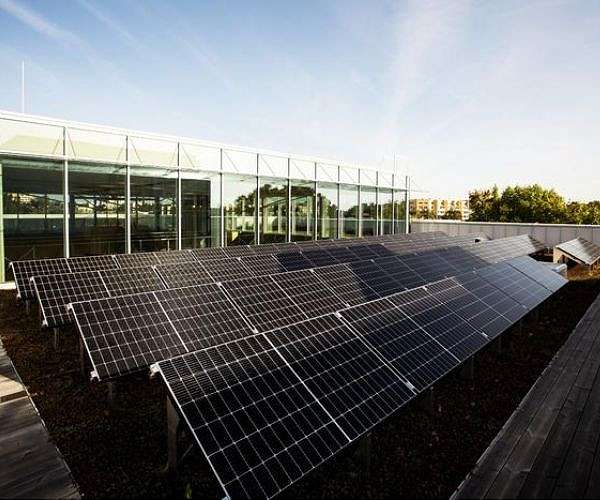Lithuanian researchers promote solar cell technology
Researchers from Kaunas University of Technology (KTU), Lithuania, who previously developed high-efficiency solar cells, have expanded their invention. The self-assembling monolayers can now be applied in perovskite solar cells with both inverted and regular structures.
Self-assembling molecules form a layer one molecule thick and act as an electron transport layer in solar cells.
“The molecules that make up these monolayers, like a smart glue, cover the surface of the constructed devices with a thin layer one molecule thick. And this is not random, they do not stick wherever they go, but attach themselves by chemical bonds only where they come into contact with conductive metal oxide,” explains Tadas Malinauskas, professor at the Faculty of Chemical Engineering of KTU and one of the inventors of the new technology.
According to Malinauskas, creating such a layer is a simple and material-efficient process, which involves immersing or spraying a glass substrate with an electrically conductive metal oxide layer with a highly diluted solution of the compound. The self-assembling molecules attach only to the metal oxide surface, washing away non-adherent molecules. This creates a thin layer exactly where it is needed.
KTU researchers have been synthesizing and studying charge-transporting organic materials for several years, previously focusing on molecules for positive charge transfer in perovskite solar cells.
‘We can already say with confidence that these molecules have given a major boost to the development of the next generation of solar cells. So our next step is very logical: to develop analogous molecules that can carry negative charges, and apply these materials in perovskite solar cells,” says Vytautas Getautis, professor at the KTU Faculty of Chemical Engineering and head of the research group.
Although it is a very thin layer, its role in solar cells is crucial. Malinauskas compared its function to that of an automatic gate on the subway, which allows only one type of charge to flow through the electrode, increasing the efficiency of the solar cells.
Perovskite solar cell structures vary in layer order. In the regular structure, a negative charge-transporting layer is formed on a transparent substrate, followed by light-absorbing and positive charge-transporting layers. In the inverted structure, the positive and negative charge transport layers are interchanged.
KTU PhD candidate Lauryna Monika Svirskaite explained that the main difference between the two structures lies in their areas of application. The regular structure is used to study cheap, easier to manufacture but less efficient solar cells, while the inverted architecture allows for more efficient combined devices, known as tandem devices.
With both structures currently under intensive research, KTU scientists believe that their new invention is just as important and promising as their previous developments.
The new invention is the result of collaboration with scientists from King Abdullah University of Science and Technology (KAUST).
“We, KTU chemists, were responsible for the development, improvement and optimization of the materials and coating technology, while our colleagues from Saudi Arabia investigated its performance in solar cells,” Malinauskas revealed.
Greta Zekiene, Head of Intellectual Property Management at KTU’s National Innovation and Entrepreneurship Center (NIEC), said demand for this invention is surprisingly high. The interest in the industrial use of the invention preceded the filing of the patent application.
“A Japanese company, with whom we already have several licenses for inventions in this area, immediately showed interest in having the innovation in their product portfolio. They waited for us to prepare a patent application. The process of negotiating a licensing agreement began immediately,” Zekiene said.
She emphasized that obtaining a patent is not necessary for commercializing an invention, as it depends on the individual case. Commercialization can occur at any time if a company expresses its intention to license or assume all ownership rights.
Zekiene added that solar cell inventions made by the Synthesis of Organic Semiconductors research group are the strongest in KTU’s patent portfolio and are receiving significant interest from companies. “We feel proud and recognized when companies want to start using the inventions as quickly as possible,” she said.
Research report:Non-fullerene self-assembled monolayers as electron-selective contacts for perovskite solar cells


